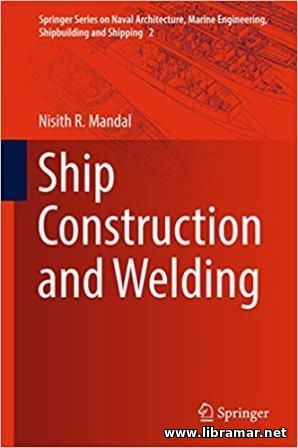
The present publication was written the address the various areas of the ship hull construction, covering literally everything starting from the types of ships and materials used for construction, and up to the welding technologies applied and quality control. The material is arranged in a very logical way and deals with the structural arrangement of the vessels featuring transverse and longitudinal; systems of framing, on the basis of the calculated service loads.
The author provides detailed and understandable explanations of the essential structural elements of the hull together with the most commonly used structural sub-assemblies. The construction of the ship’s double-bottom has been presented in detail along with the fore- and aft-end structures, midship section and other critically important areas. All materials normally used for the ship construction have been covered, including steel, FRP and aluminum alloys, with particular attention paid to the preparation of the construction materials, cutting and joining techniques, welding etc.
The formation of the residual stress in the hull structures has been addressed with the focus made on the buckling of thin metal panels caused by the welding. In short, all aspects of ship hull construction have been covered including the methods used for the nondestructive examination of the metal surfaces and welding seams.







 have been fit tested and properly trained to use the SCBA suits. The SCBA shall carry at least thirty minutes of air on your normal circumstances.
have been fit tested and properly trained to use the SCBA suits. The SCBA shall carry at least thirty minutes of air on your normal circumstances.